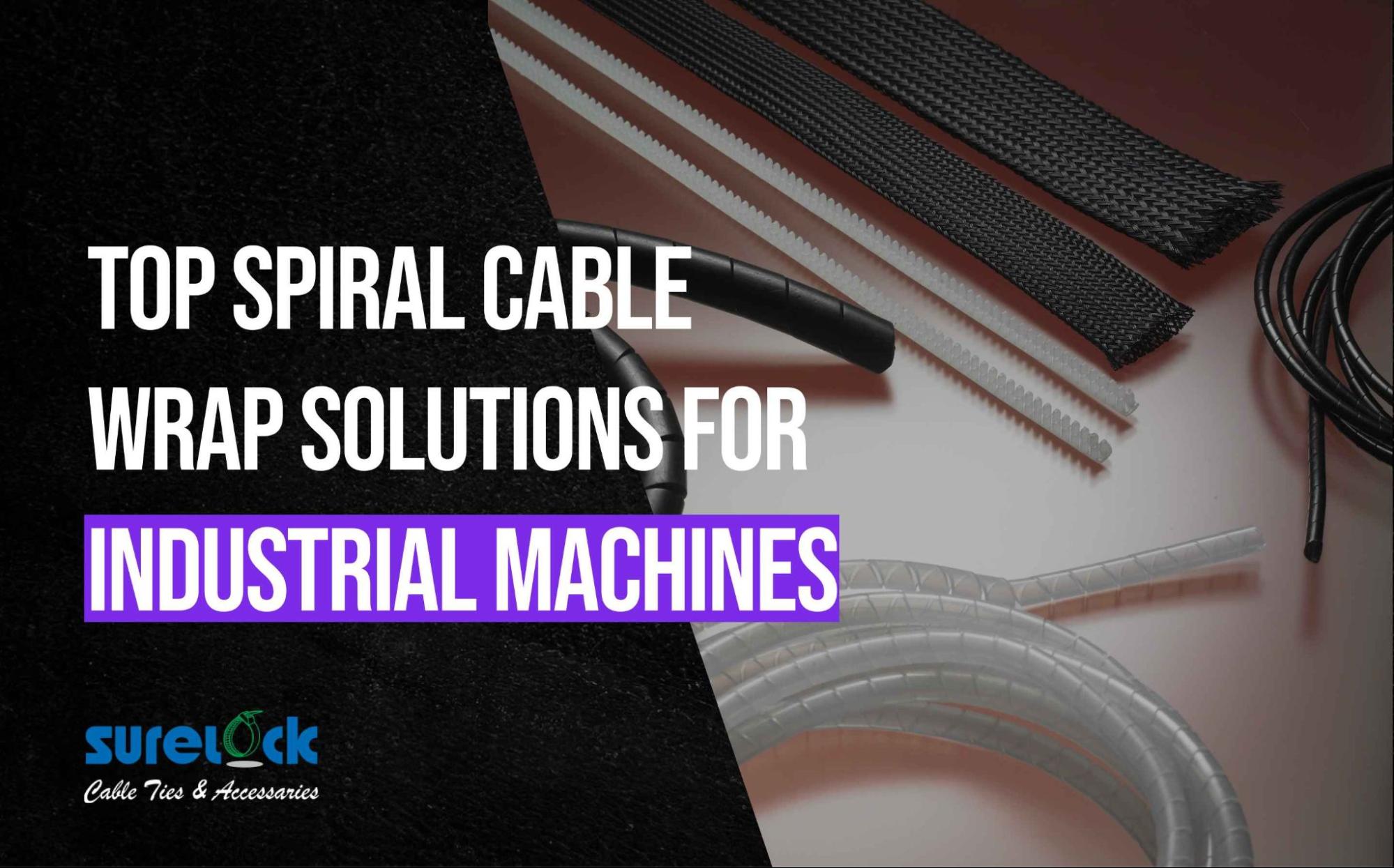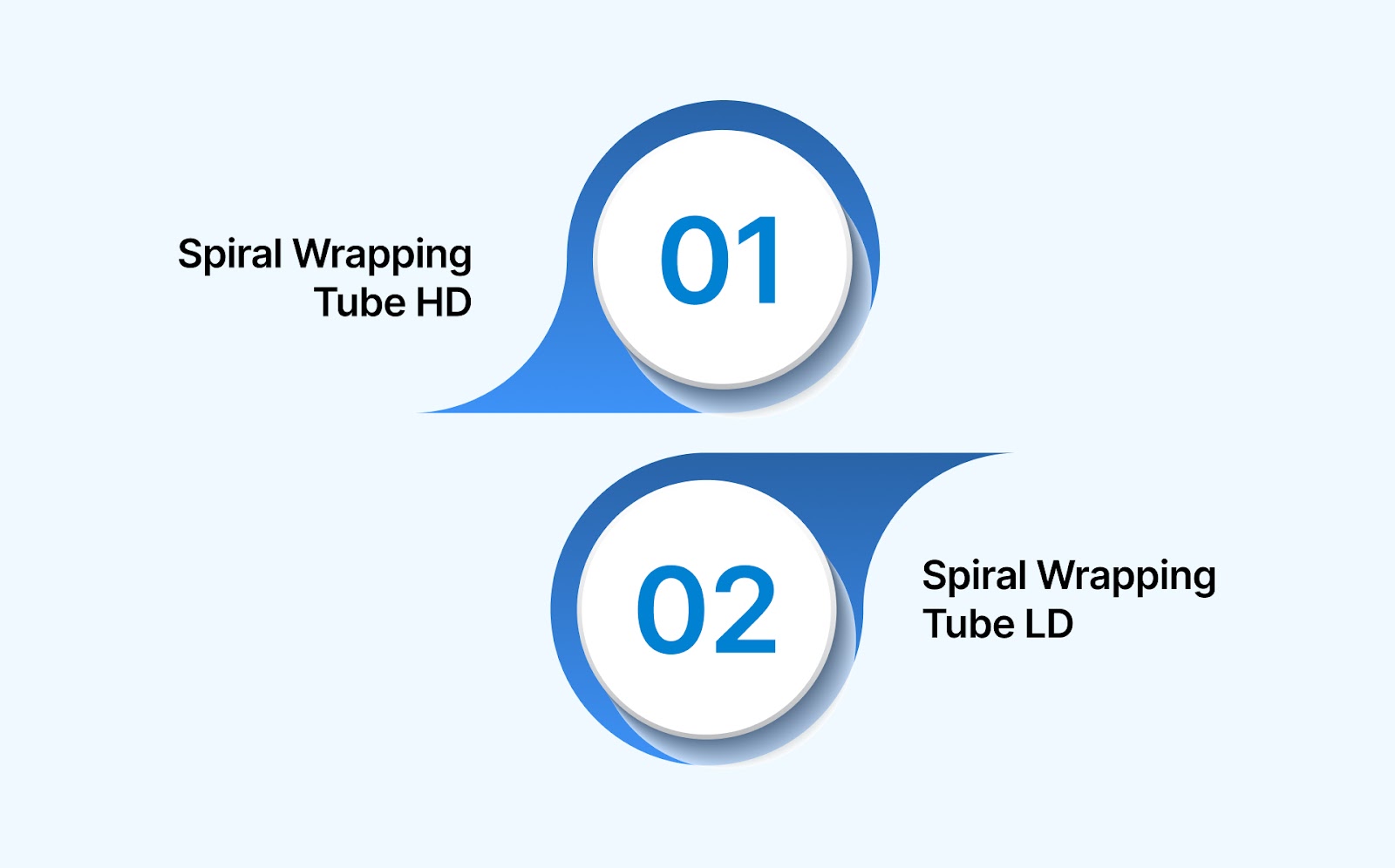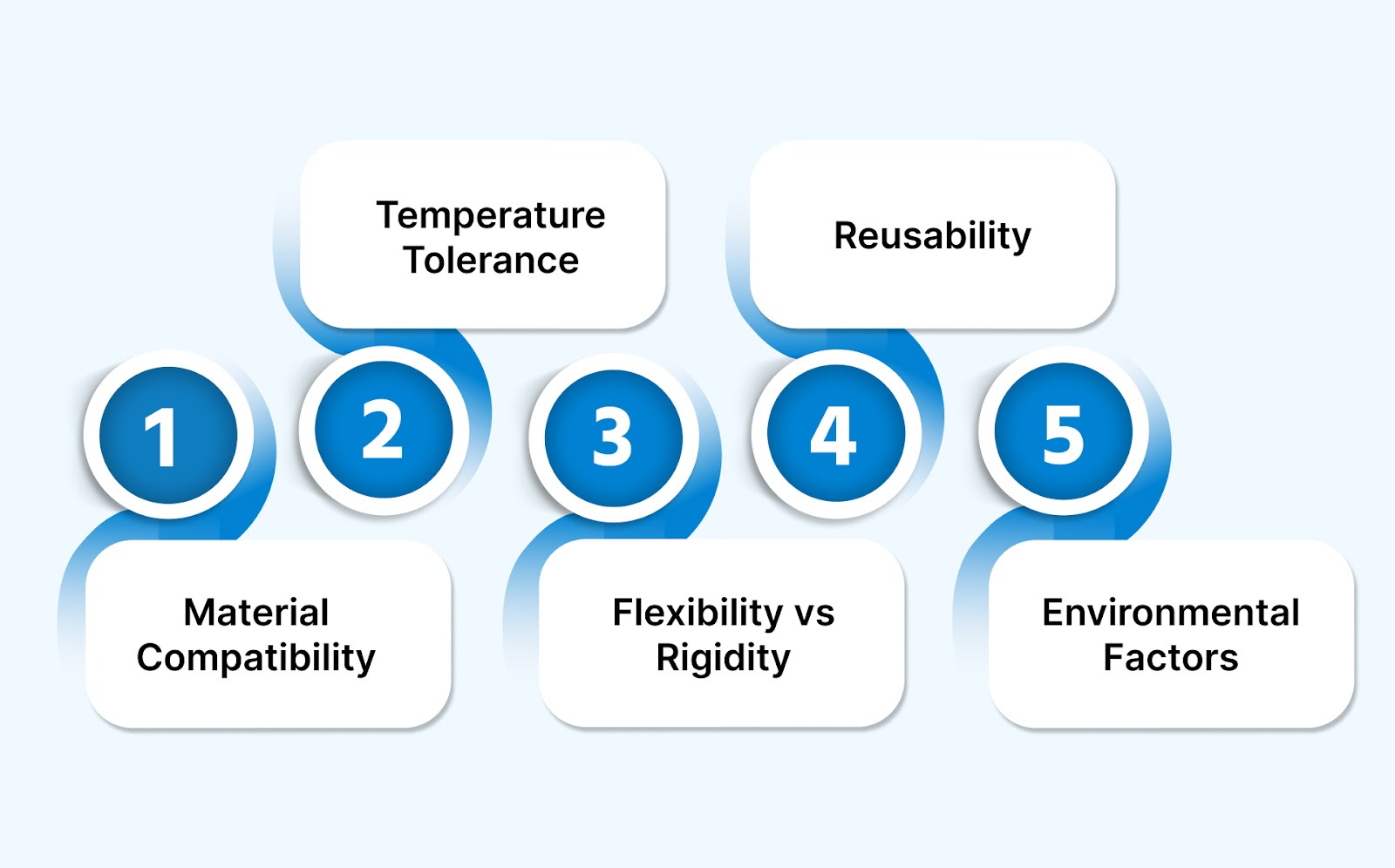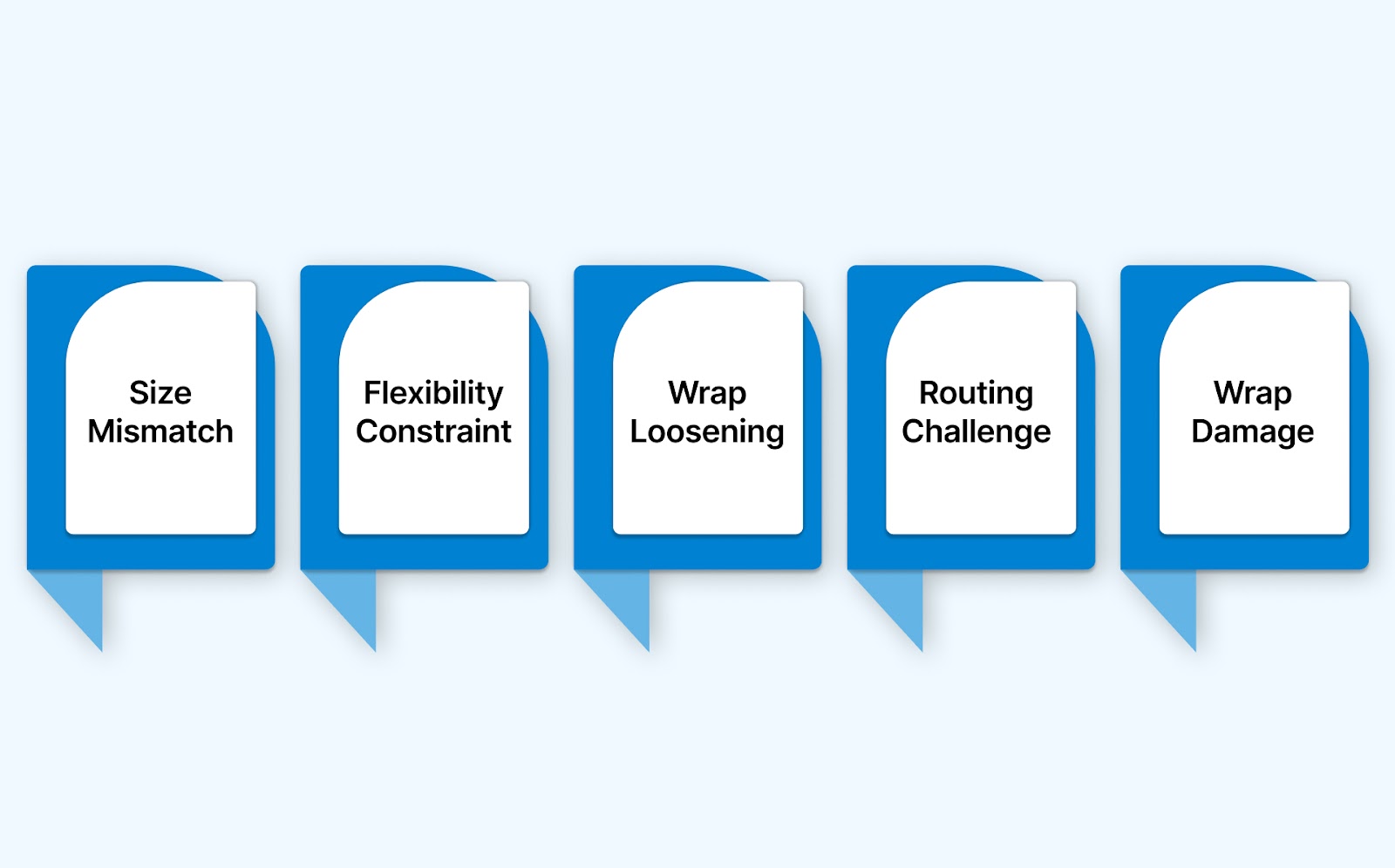Top Spiral Cable Wrap Solutions for Industrial Machines
July 30, 2025

Are your industrial machines running smoothly, or are exposed cables causing unnecessary wear and tear? Loose, tangled, or unprotected cables increase the risk of abrasion, equipment failure, and unplanned downtime. For operations that depend on precision and consistency, cable damage isn’t just a nuisance; it’s a liability.
Cable management that fails to keep pace with demanding industrial conditions is the key challenge. That’s why we understand the value of a cable management tool that’s simple, effective, and built for real-world industrial use.
Spiral cable wraps provide a practical solution to this ongoing issue, helping you organize, protect, and extend the life of your cables without adding complexity. But with multiple types, materials, and applications, how do you choose the right one?
In this blog, we’ll discuss spiral cable wraps, their importance in industrial settings, how to choose the right type for your needs, and best practices for installation. If cable reliability is non-negotiable for your operation, this guide is built for you.
TL;DR - Key Takeaways
- Spiral cable wraps protect cables from abrasion while allowing for flexibility in dynamic systems, such as robotics and industrial machines.
- Choosing the right wrap size ensures a snug fit and easy maintenance access without compromising protection.
- Polyethylene (P.E.) wraps offer durability across a wide temperature range, making them ideal for harsh industrial environments.
- Proper installation keeps wraps secure, preventing slippage and wear that can compromise long-term cable organization.
- Ideal for industries such as automotive, electronics, and renewable energy, spiral wraps ensure cable reliability in demanding environments.
What is Spiral Cable Wrap?
Spiral cable wrap is a practical and flexible solution for managing and protecting cables. Its spiral design makes it easy to add, remove, or reroute cables without needing to remove the entire wrap, offering quick access for maintenance and repairs.
This wrap shields cables from abrasions, making it ideal for harsh environments where wear and tear are common. It’s widely used in industrial machines, robotics, and automotive applications where cables need to move or flex without compromising protection.
Spiral cable wrap is a versatile choice, providing both organization and flexibility to meet the demands of dynamic equipment.
Now that we’ve covered what spiral cable wrap is, let's explore why it's such a crucial tool for industrial applications and how it benefits machinery and systems.
Why Use Spiral Cable Wrap for Industrial Machines?

Spiral cable wrap is an essential component for ensuring the longevity and efficiency of industrial machines. It offers unmatched protection, flexibility, and accessibility, making it a go-to solution for cable management in demanding environments.
Here’s why spiral cable wrap is crucial for industrial machines:
- Protection from Abrasions: It shields cables from daily wear and tear, reducing the risk of damage and the need for frequent repairs.
- Flexibility for Movement: The spiral design enables cables to flex and move, making it ideal for machines with moving parts or robotics that require dynamic cable routing.
- Easy Maintenance: Unlike other cable management solutions, spiral wraps provide easy access to cables for quick repairs and adjustments, minimizing downtime.
- Organizes Cables Efficiently: Bundles cables neatly, reducing clutter and ensuring each cable is easily identifiable and accessible when needed.
- Durable in Harsh Conditions: Ideal for industrial settings, spiral cable wrap withstands exposure to extreme temperatures, chemicals, and physical impacts.
Spiral cable wrap not only keeps cables safe but also improves the overall performance and reliability of industrial machinery.
Now that we know why spiral cable wrap is essential, let’s break down the different types available and how each one addresses various industrial needs.
Types of Spiral Cable Wraps for Industrial Applications

When selecting the ideal spiral cable wrap for your industrial applications, understanding the various types and their specific features is essential. Below are the two primary types of spiral cable wraps commonly used in industrial settings, each offering unique benefits and features.
1. Spiral Wrapping Tube HD
The Spiral Wrapping Tube HD provides excellent abrasion protection for wire and cable insulation, as well as for hydraulic or pneumatic tubing.
- Material: P.E. (Polyethylene)
- Operating Temp: -40°C to +85°C
Features:
- Can be reused when changes are required in the cable bundle.
- Ideal for use in a gapped manner where flexibility, breakouts, and economy are needed.
- Suitable for use in a butted manner where rigidity and protection against continuous abrasion are required.
2. Spiral Wrapping Tube LD
The Spiral Wrapping Tube LD is designed similarly to the HD version, offering protection against abrasion for wire and cable insulation as well as hydraulic or pneumatic tubing.
- Material: P.E. (Polyethylene)
- Operating Temp: -40°C to +85°C
Features:
- Can be reused when changes are required in the cable bundle.
- Works well in a gapped manner for flexibility, breakouts, and cost-efficiency.
- Can be used in a butted manner for rigidity and continuous abrasion protection.
Surelock offers a wide selection of spiral cable wraps, from HD to LD options, designed to provide the right balance of protection and flexibility for your specific industrial needs. With materials that endure tough conditions, our wraps help you keep your cables secure and your operations running smoothly.
After exploring the types of spiral wraps, it's time to understand how to choose the right one based on your specific requirements and industrial setup.
Also read: Guide to Understanding Cable Ties: Types and Uses
How to Select the Best Spiral Cable Wrap for Your Needs

Choosing the right spiral cable wrap is crucial to ensuring your cables remain organized and protected in industrial settings. With various options available, here are some key considerations to guide your decision-making process:
- Material Compatibility: Choose a spiral wrap made from a material that matches your environment. Polyethylene (P.E.) is commonly used for its durability and flexibility in industrial applications.
- Operating Temperature Range: Ensure the wrap can handle the operating temperatures of your equipment. Look for wraps with an operating range that meets or exceeds your machinery’s temperature conditions.
- Flexibility vs. Rigidity: Decide if you need flexibility for dynamic applications (such as robotics) or rigidity for applications that require long-term protection against continuous abrasion.
- Reusability: Consider whether you need to adjust or change the bundle frequently. A reusable spiral cable wrap is ideal for setups that require frequent modifications.
- Environmental Factors: Take into account factors like exposure to chemicals, UV rays, or moisture. Choose wraps that are resistant to the specific elements your cables will face.
When it comes to choosing the right spiral cable wrap, Surelock makes it easy. Our high-quality wraps are engineered to match your exact requirements, whether it’s flexibility, protection, or ease of use, ensuring your cables stay organized and protected in any environment.
With the right selection in mind, let's take a closer look at the diverse applications of spiral cable wraps across different industries and the real-world benefits they provide.
Industrial Applications and Uses of Spiral Cable Wrap
Spiral cable wrap plays a vital role in various industrial applications by providing protection, organization, and flexibility for cables and wiring. Below is a breakdown of how it is used across key industries:
Spiral cable wrap is a versatile tool that meets the demands of each industry, whether for protection from external damage, organization for easier management, or ensuring flexibility in complex systems.
Knowing the applications of spiral cable wraps is crucial, but proper installation is key. Let’s walk through the best practices for ensuring an effective and hassle-free application process.
Also read: Exploring Innovative Uses of Cable Ties in Industries
Spiral Cable Wrap Installation: Techniques and Best Practices
Installing spiral cable wrap is a straightforward process that doesn’t require specialized tools. By following a few simple techniques, you can ensure your cables are properly protected and organized for optimal performance.
Here are the installation techniques and best practices for using spiral cable wrap:
- Prepare Your Cables: Before wrapping, ensure cables are clean and free from debris. Untangle any knots to make the wrapping process smoother.
- Measure the Cable Bundle: Determine the outside diameter of the cable bundle. This will help you choose the correct size of spiral wrap.
- Select the Right Wrap Size: Choose a spiral wrap that is slightly smaller than the diameter of the cable bundle. It should fit snugly but not be too tight, allowing room for movement.
- Position the Wrap for Flexibility or Protection: The spacing of the spirals impacts flexibility. Wider spaces allow sharper bends, while closer spirals offer better protection against abrasion.
- Start Wrapping from One End: Begin at one end of the cable bundle and work your way along the length. Ensure the wrap follows a smooth spiral pattern for easy adjustments.
- Route Cables Outside the Bundle (If Necessary): If you need to route cables outside the bundle, do so during the wrapping process. The wrap can be unwrapped later if re-routing is required.
- Trim Excess Length: After applying the wrap, trim any excess at the ends to maintain a neat installation. Avoid cutting too close to the cable bundle.
- Add Labels for Easy Identification: Consider labeling or color-coding the cables for future maintenance and troubleshooting. This will help quickly identify cables when needed.
- Regularly Inspect for Wear: Over time, check the wrapped cables for signs of wear or loose connections. Rewrap or replace damaged wraps to maintain cable integrity.
Installing cable wraps is a breeze with Surelock. Our spiral wraps are designed for simple application, offering robust protection and flexibility. With Surelock, you can ensure that your cables are well-managed and secure, all while saving time and reducing long-term maintenance costs.
While installing spiral wraps is simple, there are challenges that can arise. Let's examine some of the common issues and how you can easily overcome them to ensure long-term success.
Common Challenges with Spiral Cable Wrap and How to Overcome Them

While spiral cable wrap offers many benefits, there are a few challenges that can arise during its application and use. Below, we address these common issues and provide practical solutions to ensure the best results for your cable management needs.
- Challenge: Incorrect Size Selection
- Solution: Always measure the outside diameter of the cable bundle before choosing a spiral wrap. Select a wrap that is slightly smaller to ensure a snug, secure fit without over-tightening.
- Challenge: Limited Flexibility for Dynamic Applications
- Solution: If flexibility is crucial, opt for a wrap with wider spiral spacing. This allows for sharper bends without compromising the overall organization of the cables.
- Challenge: Wrap Slipping or Loosening Over Time
- Solution: To prevent the wrap from slipping, ensure it is applied snugly. Avoid leaving too much space between the wrap and the bundle. For additional security, consider using cable ties or clips at both ends.
- Challenge: Difficulty in Re-routing Cables
- Solution: If cables need to be routed outside the bundle, do so during the installation process. The spiral wrap can be easily unwrapped and reused if changes are necessary.
- Challenge: Wear and Tear on the Wrap
- Solution: Regularly inspect the spiral wrap for signs of wear, especially in high-friction or harsh environments. Replace any damaged wraps to maintain optimal protection and organization.
By understanding these common challenges and applying the provided solutions, you can ensure that the spiral cable wrap continues to serve its purpose effectively, keeping cables organized, protected, and easy to manage.
Conclusion
Spiral cable wraps offer an efficient and cost-effective solution for protecting and organizing cables in industrial settings. With their ability to enhance flexibility, reduce wear, and improve overall system reliability, they are a must-have for businesses looking to maintain smooth operations.
At Surelock, we understand the importance of durable, high-quality cable management solutions. With products like Spiral Wrapping Tube HD and Spiral Wrapping Tube LD, as well as a wide range of cable ties, security seals, and wiring accessories, we provide the tools you need to keep your cables organized and protected, regardless of the industry.
Get in touch today to explore top-notch cable management solutions for your industrial needs.
Frequently Asked Questions
1. What’s the best method to wrap cables for studio use?
For studio environments, use spiral cable wraps with wider spacing between spirals. This ensures flexibility and allows for easy adjustments while protecting the cables from tangling and abrasion.
2. Is it OK to coil power cables?
While coiling power cables is common, it’s important to avoid tight coils that can damage the insulation. Use a loose coil and store cables properly to prevent wear and potential electrical hazards.
3. Can spiral cable wrap be reused?
Yes, spiral cable wrap can be reused. Simply unwrap it carefully when adjusting cables and apply it again to ensure continued protection and organization.
4. How do I choose the right size spiral wrap?
Measure the diameter of the cable bundle and select a spiral wrap slightly smaller than the bundle size. This ensures a snug fit that prevents slipping but allows for cable movement.
5. How often should I check my wrapped cables?
It’s a good idea to inspect wrapped cables periodically for signs of wear or damage. Replace or rewrap sections if needed to maintain optimal cable protection and functionality.



